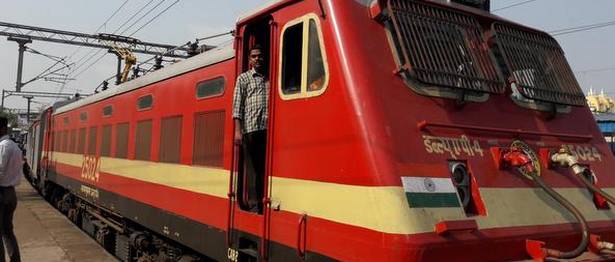
The perks make up for the stress and long work hours of a loco pilot
A day as a train driver is no walk in the park. But despite the long and unearthly working hours, constant stress and skewed work-life balance, the job of the driver, called assistant loco pilot (ALP), is the most sought-after among candidates appearing for the Railway technical exams. The reasons are not far to seek though.
As an ALP, one gets special perks such as overtime and outstation allowance, and in the process, can earn 2.5 times as much as a Railway technician earns. A Railway technician is also selected through the same exam,
Candidates who appeared for the technical exam of the Indian Railways in 2018 have gone through two rounds of shortlisting. Now, in order to qualify as an assistant loco pilot, they will have to appear for an aptitude or a psychological test, conducted by the Lucknow-based Railway Design Standards Organisation.
“Those who preferred a technician’s job would not have to appear for the psychological test, while those who chose ALP will have to clear the aptitude test. Technicians become welders and masonists. More number of candidates have preferred to be an ALP,” an official told BusinessLine.
Driving a train, be it ferrying passengers or goods, is more than a job. The person entrusted with the task of steering a train has to be alert all the time and should not lose his/her cool even in case of an accident.
Even otherwise, the working conditions can get quite daunting including lack of basic amenities like toilet and extreme weather conditions. “We have to time our food intake in such a manner that we don’t feel the need to use the toilet,” said a loco pilot who has driven mail, express and the high-speed Shatabdi trains.
The career graph of an assistant loco pilot includes running short-distance passenger trains, followed by posting for ‘shunting’. Shunting is the act of driving trains from platforms to their parking spot or the yard, where they are given a quick wash, and moving them back from the yard to platforms. The drivers then have to steer goods trains, which haul freight across short and long distances.
Women joining up, too
In the last few years, a few women have also been recruited as loco pilots. But their career progression faces multiple challenges as the job involves driving goods trains in tough, sparsely inhabited terrains, which could be unsafe. Hence, women loco pilots have been tasked with steering goods trains over shorter distances.
The big challenge
The biggest challenge for drivers plying a goods train is the absence of time-table. This translates to lowest priority in access to tracks. This means the fate of goods-train drivers depends on how fast and how many passenger trains move on the limited track, before the goods train is provided track access.
“So, several times, the goods train driver ends up getting stuck for long hours in uninhabited places, jungles, and deserts on tracks parallel to the main rail track, watching passenger trains go by, waiting for their turn to haul the train,” explained a railway official.
After the goods stint, drivers move up to driving ‘time-tabled’ passenger trains, a job that makes them responsible for the safety of hundreds of passengers. But despite all the precautions, accidents do happen. This is because even if a driver applies the brake sensing danger, a high-speed train travels a certain distance before coming to a halt. Seeing someone or an animal getting hit is the saddest and toughest part of the job, a loco pilot rues.
[“source=thehindubusinessline”]
